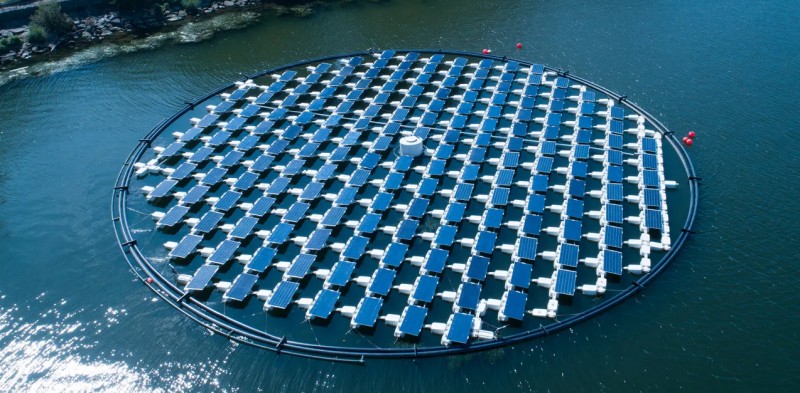In the search to find space for large solar arrays, many countries are looking to floating systems. Now the Netherlands is taking this one step further, with water-based arrays that follow the Sun.

According to the BBC news dated on Nov. 18th By Isabelle Gerretsen
On a lake in the Netherlands, a shiny circular island floats, covered in dozens of shimmering solar panels. But this is no normal solar array, nor even simply one of the many new floating solar farms being installed in lakes, reservoirs and coastal areas across the world. That's because its panels are doing something none of these other floating solar farms can do: meticulously tracking and following the Sun as it moves across the sky, to catch as many rays as possible.
This glistening installation, named Proteus after the ancient Greek sea god, is among the first to combine floating solar panels with Sun-tracking technology – all in an effort to maximize the amount of clean electricity it can produce.
The island, floating in Oostvoornse Meer, a lake in the south-west Netherlands, is covered in 180 of these moving solar panels, with a total installed capacity of 73 kilowatt of peak power(kWp). It's a tiny amount in a world rapidly trying to switch to renewable energy, but SolarisFloat, the Portuguese company which built Proteus, believes this small installation could be scaled up to generate large amounts of clean electricity – and, crucially, without taking up valuable land.
Alongside this massive growth, researchers continue to look for improvements in solar technology. Most of the solar panels installed so far across the world lie on solid land. But solar technologies which float on water offer a unique advantage: they don't take up land space that may be needed for other uses.
In a world looking to rapidly expand solar arrays, this gives floating solar a significant edge,especially for countries facing land scarcity.Conventional solar farms are often criticized for the amount of land they occupy– land which could otherwise be used to grow crops to feed the world's growing population, or carbon-absorbing trees. Solar energy requires a huge amount of space, at least 40-50 times more than coal plants and 90-100 times more than gas, according to research by Leiden University in The Netherlands.
Conservationists have also expressed concern that land-based solar and wind farms can have a harmful impact on biodiversity, especially those that are built in species-rich areas. Building sun-absorbing technology on water is therefore a smart way to free up land, while also making use of unoccupied lakes and reservoirs. Countries such as Japan and Singapore are investing heavily in floating solar farms because of limited land availability or very expensive land.